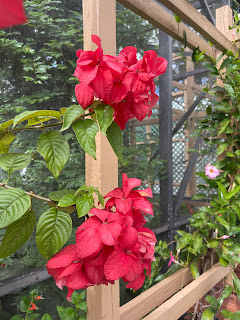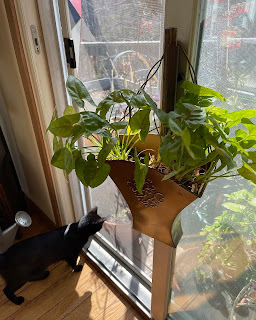Initially I learned about the Winter Sowing Technique for starting seeds on a podcast over four years ago. The hosts were homesteaders in Texas.
They were great gardeners and propagated most of their seedlings using this method. A quick Google search provided me with much needed additional information including the definition that follows: "Winter Sowing is a method by which seeds are sown into containers that act like mini greenhouses. These seed vehicles are then located outside, experience the chill of winter and eventually germinate in the spring." It is a phrase that was first coined by Trudy Davidoff. You can read more about her ideas at www.wintersowing.org. I have found that this method helps me start seeds that need that cold chill to germinate. Since I am now planting a lot of native wildflower areas, many of the plants that I want multiples of thrive with this treatment. It is perfect for me. I use more traditional methods of starting seeds for the other plants I want to grow.
I feel that the best advice for this method of seed starting would be to BE PREPARED!
#1 This method will provide you with a mass of seedlings that will need to be divided and transplanted.
#2 Seeds that need the cold stratification work best. I am very selective which seeds I pick for this method. Some seeds are better started by more traditional methods.
#3 This method has been amazing for the perennials that I want to plant in mass for the bees and butterflies.
I collect all of the containers during the summer. I have come to the conclusion that the best containers are the salad and berry containers. They require the least amount of alteration and are the we easiest to use.
I also purchase any seeds on sale at the end of the year that are just want I am looking for to plant in my wildflower gardens.
Now is the time to plant the seeds. I prepare each container with good drainage holes. This is so important because nothing will sabotage the process quicker than poor drainage.
Then I fill each container with a good seed starting mixture and plant each one. Water carefully and then they are placed outside into their winter greenhouse.
Labeling is such a big issue. So this year I have it nailed. I took physical notes and also used my I phone to label each container. I hope this works better as this is the biggest issue with this method.
I will watch these containers all throughout the rain, snow, sleet and hail. February, March, April and May, it is so exciting to see the babies emerge.
So stay tuned and I will show you the results.
Here are the seeds I am starting this time..
Showy Golden Rod( Solidago specious)
Lavender Hyssop
Triple Curly Parsley
Big Italian Parsley
Rosemary
Butterfly Weed
Tarragon
Lavender Munstead
Lavender Lady
Snap Dragons
Chives
Lupines






































